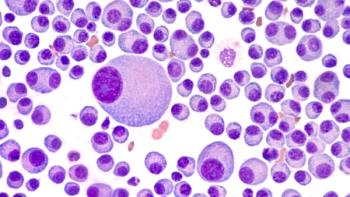
Patient-Reported Outcome Measures Useful in Clinical Treatment of Pediatric Patients with Cancer
Electronic symptom self-measuring provided early detection of toxic effects and helped anticipate necessary medical interventions for pediatric patients with cancer.
The integration of patient-reported outcome measurements (PROMs) for pediatric patients with cancer in the clinical routine is possible and effective, according to a study published in JAMA Network Open.
PROMs were found to reflect daily symptoms in pediatric patients with cancer and assist in the clinical management and intervention of adverse events (AEs). Although PROMs are emerging as a vital component of adult cancer care, they have not been previously implemented for pediatric cancer care.
Researchers conducted a single-cohort study to identify pediatric patients with cancer who are at risk of severe AEs of treatment and provide individualized supportive care using PROMs.
Researchers conducted the study from May 1, 2020, to November 15, 2021, at the Medical University of Innsbruck in Austria. The cohort included pediatric patients with a cancer diagnosis or their proxies. PROMs were implemented in daily clinical routine and patients were followed up until completion of therapy or through ongoing therapy until November 15, 2021.
Inclusion criteria for participants included treatment with chemotherapy and at least 30 days of active participation in ePROtect, the web-based approach for daily child self-reporting and parent-based proxy reporting used in the study.
Researchers analyzed the occurrence and severity of complications of cancer treatment, such as nausea, appetite loss, pain, sleep disturbance, and deterioration of physical functioning. They also identified early and appropriate clinical interventions based on detection of cancer-related symptoms via PROMs.
The cohort included 40 children, including 35 children aged 5 to 18 years and 5 proxies for children aged 1 to 4 years (median age, 9.1 [IQR, 6.3-12.2] years; 26 [65.0%] male). A total of 4410 daily PROMs and 7082 therapy days were analyzed for these children during a median follow up of 145.5 days. All study participants were White.
Researchers noted that most patients in this study could complete questionnaires on most days, regardless of age, diagnosis, and therapy; however, patient completion rates differed between modalities.
The overall median completion rate was 60.1% (IQR, 37.9%-81.0%). Completion rate was 57.5% during home stay, slightly lower than during inpatient stay (65.6%).
Patients were found to complete the monitoring on more than 50% of the days, even during unplanned inpatient stays. The researchers recommend conducting further in-depth analyses on the completion rates and are currently preparing to do so.
Severe symptoms were reported on 657 days (15.9%), with most symptoms associated with physical functioning followed by pain, sleep disturbance, and nausea and appetite loss.
A total of 321 AEs and cases of health deterioration were reported. PROMs were completed for 251 (78.2%) of these events. Given that most (56.4%) days are spent by the patient at home, researchers investigated whether the ePROtect reporting enabled early detection of health deterioration before clinical manifestation.
Mean scores for pain, nausea, physical activity, and sleep disturbance domains were found to be 15 to 20 points lower in cases of unplanned hospitalization compared with planned hospitalization 1 day before admission. Researchers found self-reported pain to be the most useful marker across all AEs, particularly when analyzed on the day before onset.
Collectively, these findings suggest that electronic symptom self-measuring with ePROtect is very well received for inpatient and outpatient use, according to the authors. They suggest that electronic symptom self-measuring can provide early detection of toxic effects and can anticipate necessary admissions or medical interventions.
Electronic symptom measuring also facilitates communication and awareness of symptoms for health care professionals, which can result in more effective treatment of patients.
“In the context of increasing demands regarding patient self-advocacy and self-management, symptom self-reporting allows patients to participate more actively in their therapy and may help improve their quality of life,” the authors concluded.
The study had some limitations, including the monocentric design with a small sample size. Additionally, randomization or cross-sectional study design with and without access to ePROtect was not currently possible, according to the authors.
However, they assert that their findings still contribute to the knowledge gap on the possibility of pediatric self-reporting and its integration into the clinical routine, highlighting the high adherence and participation rates in patients with diverse cancer seen in this cohort.
Reference
Meryk A, Kropshofer G, Hetzer B. Use of daily patient-reported outcome measurements in pediatric cancer care. JAMA Netw Open. 2022;5(7):e2223701.
Newsletter
Stay informed on drug updates, treatment guidelines, and pharmacy practice trends—subscribe to Pharmacy Times for weekly clinical insights.




















































































































































































































